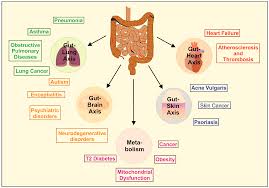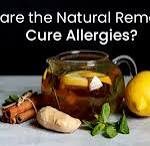Probiotics, the Microbiome, and Omic Tools: An Integrated Overview

Probiotics, the microbiome, and omic tools are all related but distinct concepts in microbiology and health sciences.
1. Probiotics
- Definition: Probiotics are live microorganisms (mostly bacteria and some yeasts) that, when consumed in adequate amounts, provide health benefits to the host.
- Common types:
- Lactobacillus (helps with digestion, lactose breakdown, immune modulation)
- Bifidobacterium (gut health, prevents harmful bacteria overgrowth)
- Saccharomyces boulardii (a beneficial yeast for gut disorders)
- Functions:
- Maintain gut microbial balance
- Support immune function
- Help in nutrient absorption and digestion
- Produce beneficial compounds (like vitamins, short-chain fatty acids)
2. Microbiome
- Definition: The microbiome refers to the entire collection of microorganisms (bacteria, archaea, viruses, fungi, etc.) and their genetic material that live in a particular environment, such as the human gut, skin, mouth, or soil.
- Human gut microbiome:
- Trillions of microbes in the intestines that affect digestion, metabolism, immunity, and even mood.
- Each person’s microbiome is unique and influenced by diet, lifestyle, genetics, and environment.
- Importance:
- Protects against pathogens
- Trains and regulates the immune system
- Synthesizes vitamins (e.g., vitamin K, B vitamins)
- Involved in chronic diseases (obesity, diabetes, inflammatory bowel disease, even neurological conditions)
3. Omic Tools
Omic sciences are high-throughput technologies used to study biological systems at a large scale. When applied to microbiome research, they help us understand not just “who is there” but also “what they are doing.”
“Beat the Pressure: A Comprehensive Guide to Lowering Blood Pressure Naturally.”
Buy book from Gumroad or Paystack
Key “omics” in microbiome studies:
- Genomics – sequencing microbial genomes to identify species and genetic potential.
- Metagenomics – sequencing the entire genetic material of microbial communities without culturing them.
- Transcriptomics – studying RNA (gene expression) to see what genes are active.
- Proteomics – analyzing proteins produced by microbes, giving insight into active functions.
- Metabolomics – studying small molecules (metabolites) produced, which directly affect host physiology (e.g., short-chain fatty acids).
- Integrative multi-omics – combining all these layers to get a systems-level view of host–microbiome interactions.
✅ In short:
- Probiotics = beneficial live microbes we ingest.
- Microbiome = the whole community of microbes + genes in a given environment.
- Omic tools = advanced technologies to study microbes at the DNA, RNA, protein, and metabolite levels.
💔 “She said she loved me. And for fifty-two years, I believed her.” 💔
Buy The Book "The Longest Lie: A Husband’s Journey Through Love, Betrayal, and Redemption" From Gumroad






